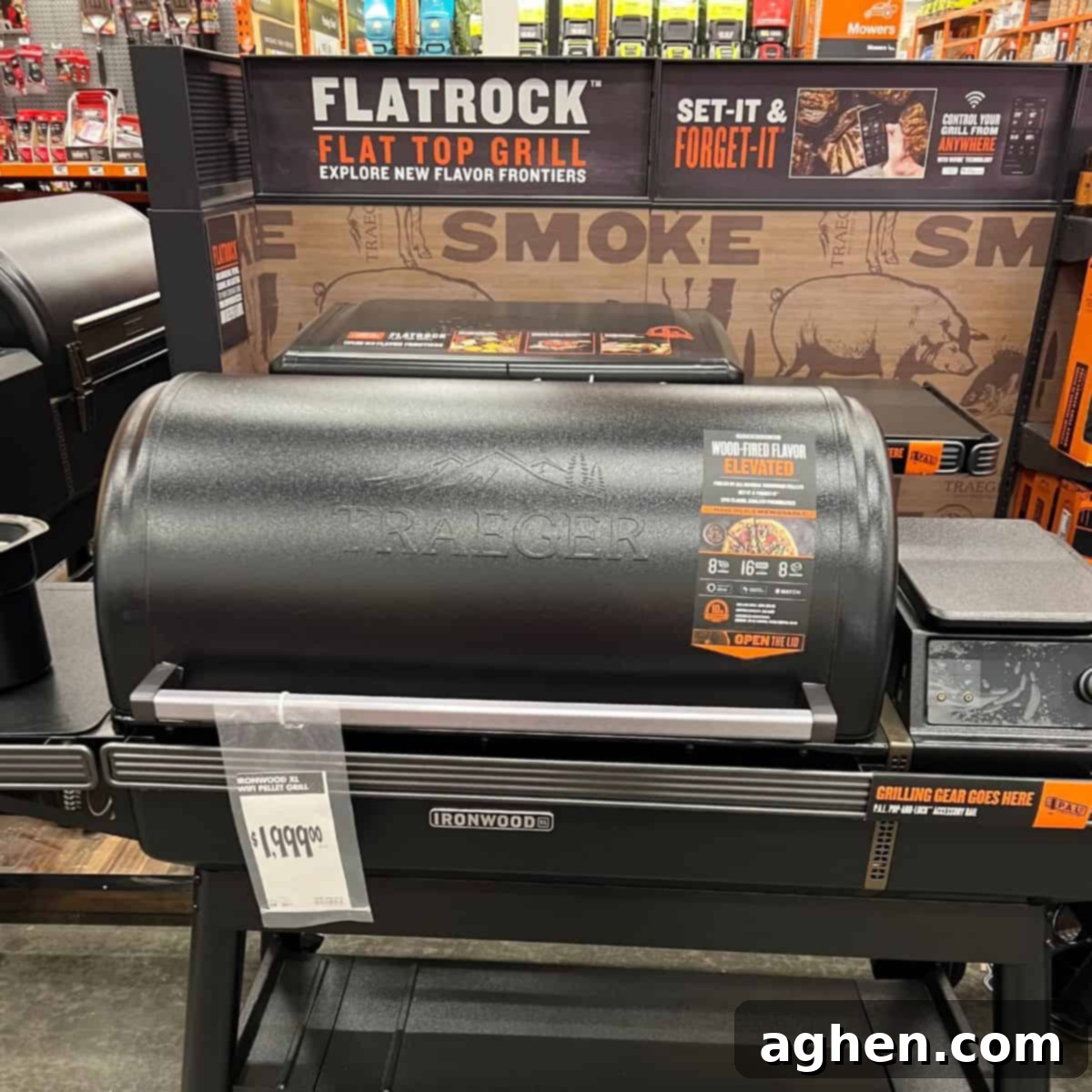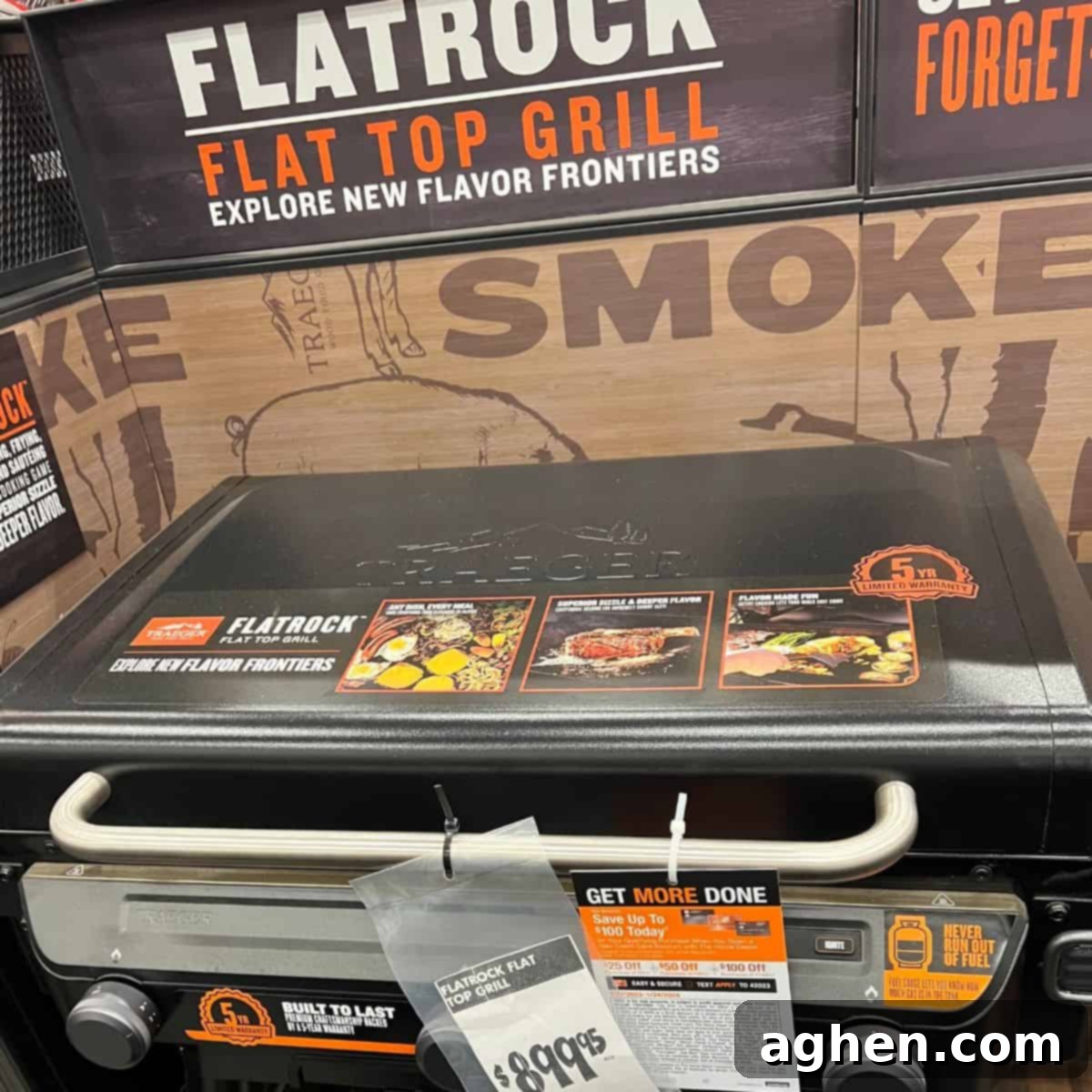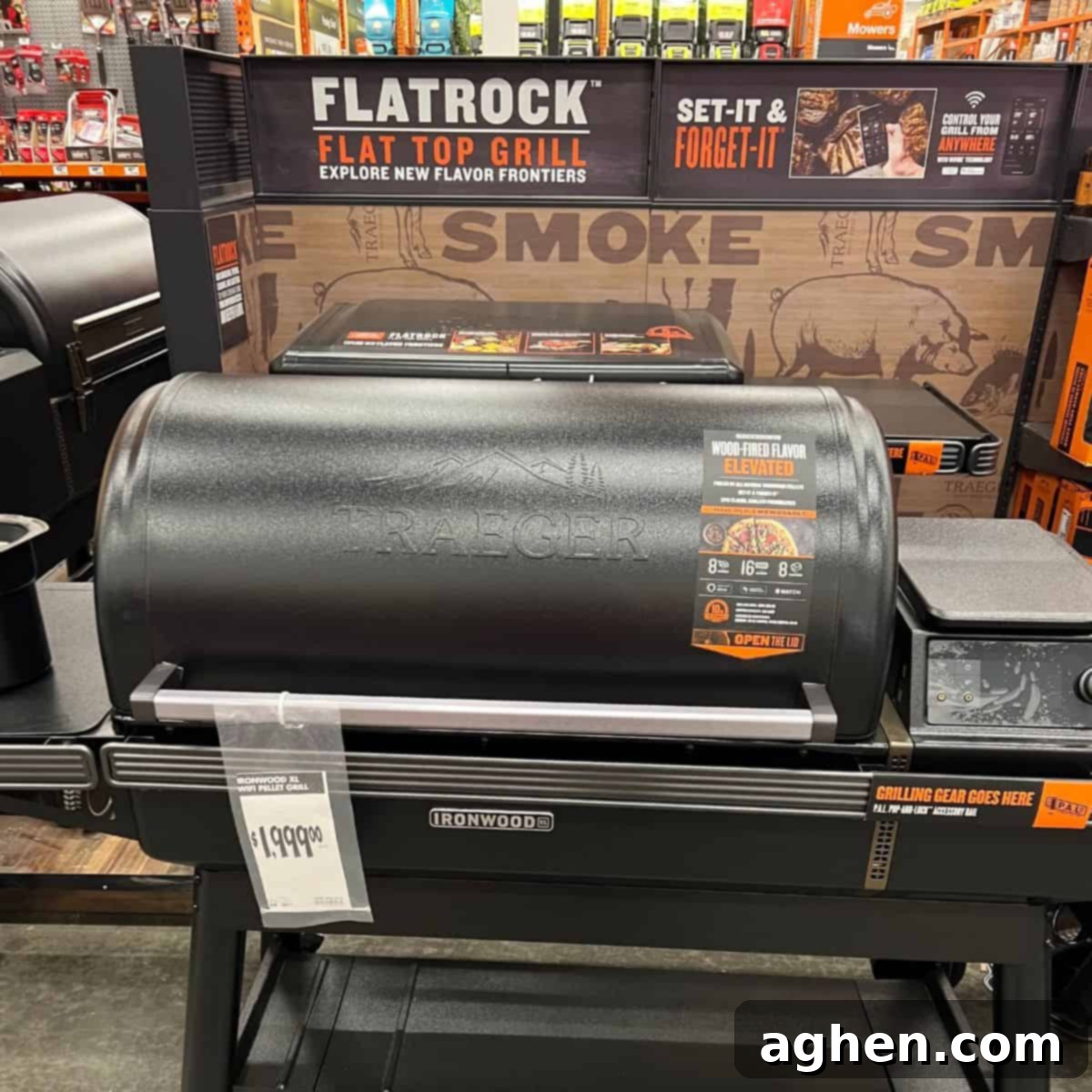Grill vs. Griddle: The Ultimate Guide to Choosing Your Perfect Cooking Appliance
For many home cooks and outdoor enthusiasts, the choice between a grill and a griddle often comes down to personal preference and cooking style. Both appliances offer unique advantages, enabling you to create a wide array of delicious meals. However, despite common misconceptions, grills and griddles are distinct cooking tools, each excelling in different culinary applications. Understanding their fundamental differences, how they operate, and their respective pros and cons is crucial for making an informed decision about which appliance best suits your needs.
This comprehensive guide will delve into the characteristics of grills and griddles, exploring their functionality, ideal uses, and limitations. By the end, you’ll have a clear picture of what each can offer, helping you select the perfect cooking companion for your home.
Grill vs. Griddle: Understanding the Core Differences
To begin, let’s establish a clear understanding of what defines each cooking appliance. While both utilize direct heat to cook food, their structural design and heat application methods lead to significantly different cooking experiences and results.
What is a Grill?
A grill is primarily characterized by its open grate cooking surface, typically positioned above a direct heat source. Food rests on these grates, allowing heat, smoke, and flames (in the case of gas or charcoal) to directly contact the ingredients. Grills are often enclosed by an insulating hood, which helps retain heat, circulate smoke, and facilitate convection cooking.
Grills utilize a diverse range of fuel sources:
- Charcoal Grills: Employ charcoal briquettes or lump charcoal, providing intense heat and a distinctive smoky flavor. These often require more time for setup and temperature management.
- Gas Grills (Propane/Natural Gas): Offer convenience and precise temperature control with instant ignition. They are known for quick heating and consistent performance.
- Wood Pellet Grills: Use compressed hardwood pellets as fuel, often combining grilling with smoking capabilities for rich, authentic flavors.
- Electric Grills: Convenient for indoor or small spaces, powered by electricity. They offer consistent heat but typically lack the smoky flavor of other grill types.
Many modern grills boast features like multiple cooking zones for varying temperatures, indirect heat racks for slower cooking or warming, and some even incorporate smoking elements through the addition of wood chips or pellets. The open grate design allows fats and liquids to drip away from the food, contributing to leaner meals and potentially producing flare-ups, which can add a desirable char but also require careful management.
What is a Griddle?
In contrast, a griddle features a completely flat, solid cooking surface, usually made from cast iron, stainless steel, or aluminum. Heat is applied directly to this flat surface, which then transfers evenly to the food. Unlike grills, griddles do not expose food directly to flames or coals, offering a more controlled and uniform cooking environment.
Griddles also come in various forms:
- Electric Griddles: Highly popular for their portability and precise temperature control, making them ideal for indoor use.
- Stovetop Griddles: Often cast iron plates that sit directly on stovetop burners, providing excellent heat retention and versatility.
- Built-in Griddles: Integrated into ranges or outdoor kitchens, offering a robust and expansive cooking area.
- Outdoor Flat Top Grills: Large, propane-powered griddles designed for outdoor cooking, often with multiple burners and extensive surface area, popular for feeding crowds.
A key feature of griddles is their integrated grease trap or channel, designed to collect excess oils, fats, and liquids. This makes cooking fattier foods less challenging than on a grill, as the grease doesn’t drip into a flame. However, this also means the grease remains near the food, potentially requiring more fat management during cooking. Regular cleaning of the grease trap is essential to prevent buildup and maintain hygiene.
Optimal Culinary Applications: Grill vs. Griddle
Understanding the basic construction and operation of each appliance sets the stage for exploring their best uses in the kitchen and backyard.

What Grills Excel At:
Grills are celebrated for their ability to infuse food with distinctive flavors and textures that are hard to replicate otherwise. Here’s where a grill truly shines:
- Smoky Flavor and Aroma: Cooking over an open flame or charcoal imparts a unique smoky essence that is a hallmark of grilled food. This is amplified in wood pellet grills, which can effectively double as smokers.
- Distinctive Char and Grill Marks: The direct contact with hot grates creates beautiful, caramelized sear marks and a delightful char. These visual cues enhance the aesthetic appeal and contribute to the “anticipation” of flavor.
- Leaner Cooking: As fats and oils render out of meats, they drip away through the grates, leading to a naturally leaner final product. This is particularly beneficial for cuts of meat with higher fat content.
- High-Heat Searing: Grills can reach very high temperatures, ideal for quickly searing the exterior of steaks, chops, and large vegetables, creating a flavorful crust while keeping the interior juicy.
- Outdoor Entertainment: Grilling is often a social activity, perfect for backyard gatherings and barbecues, creating an enjoyable atmosphere.
- Specific Foods: Excellent for cooking whole cuts of meat like steaks, chicken breasts, pork chops, sausages, larger vegetables (corn on the cob, bell peppers, zucchini), and even some fruits (pineapple, peaches).
While the dry heat of a grill can potentially dry out very lean meats if not managed carefully, it also contributes to a more intense, umami-rich flavor profile. The relatively minimal use of added cooking fats makes grilling a healthy option for many.
For inspiration, explore a variety of grill recipes that showcase these benefits!

What Griddles Excel At:
Griddles offer unparalleled versatility due to their flat cooking surface and even heat distribution. They are masters of consistency and convenience:
- Unmatched Versatility: The flat surface accommodates a vast range of foods, including those with liquid or runny ingredients. Think pancakes, eggs (scrambled, fried, omelets), bacon, hash browns, and stir-fries – all impossible on a traditional grill grate without additional cookware.
- Superior Maillard Reaction: Griddles provide complete surface contact, resulting in an incredibly consistent and delicious Maillard reaction across the entire food surface. This leads to a uniform, golden-brown crust on items like smash burgers, seared scallops, and grilled cheese sandwiches.
- Even Heat Distribution: Griddles typically maintain a very even temperature across the entire cooking surface, minimizing hot spots and ensuring consistent cooking results for multiple items simultaneously.
- Faster Cooking for Certain Foods: The direct, conductive heat transfer can cook some foods, particularly thinner items like bacon or smash burgers, remarkably quickly.
- “Wok Hei” Mimicry: For Asian cuisine, a hot griddle can effectively mimic the “wok hei” (breath of the wok) achieved in woks, delivering that desirable smoky, caramelized flavor through high heat and rapid cooking.
- Batch Cooking: The expansive flat surface is ideal for cooking large quantities of food at once, perfect for big breakfasts or preparing multiple components of a meal simultaneously.
- Flexible Cooktop: Many griddles can safely accommodate pots and pans, effectively turning the griddle into an outdoor stove or an additional cooking surface for simmering sauces or boiling water.
Griddles are particularly adept at handling delicate items and ingredients that would fall through grill grates. Their ability to manage liquids also makes them perfect for creating sauces or cooking with marinades directly on the surface.
Discover the diverse possibilities with griddle recipes, many of which can be adapted for any flat top!
Limitations of Grills
While grills are fantastic for certain dishes, they do have inherent limitations:
- Difficulty with Small or Delicate Foods: Smaller vegetables, seafood, or finely chopped ingredients can easily fall through the grates. While skewers or grill baskets can mitigate this, they add extra steps and equipment.
- Limited Versatility for Liquid-Based Cooking: Cooking sauces, gravies, or liquid-heavy dishes directly on a grill requires specialized, heat-resistant cookware, which isn’t always convenient or readily available.
- Less Consistent Maillard Reaction: While grills create excellent char marks, the Maillard reaction (the browning and flavor development) occurs only where the food directly touches the grates. This results in stripes rather than an all-over crust, which some dishes might benefit from.
- Flare-Ups: Dripping fats can ignite, causing sudden bursts of flame that can char food excessively or even burn it if not carefully managed.
- Cleaning Challenges: Cleaning grill grates can be more laborious, often requiring specialized wire brushes and scrapers to remove cooked-on residue. Improper cleaning tools can damage the grates.
- Weather Dependency (Outdoor Grills): Outdoor grilling can be impacted by adverse weather conditions like rain, wind, or extreme cold, limiting year-round use.
Grills often require more hands-on attention during cooking, particularly with fatty foods prone to flare-ups or delicate items requiring constant monitoring to prevent sticking.
Limitations of Griddles
Griddles, despite their versatility, also have drawbacks compared to grills:
- Lack of Smoky Flavor and Char: The most significant difference is the absence of direct flame exposure, meaning griddles cannot impart the smoky flavor or distinct char lines characteristic of grilled food.
- Fat Retention and Calorie Content: Because fats and liquids collect on the flat surface rather than dripping away, foods cooked on a griddle tend to retain more of their natural fats and any added cooking oils. While this can enhance flavor, it might also lead to a higher calorie count compared to grilled equivalents.
- Less “Outdoor” Cooking Aesthetic: Even outdoor flat-top griddles don’t offer the same visual appeal or traditional “barbecue” experience associated with open-flame grilling.
- Temptation for Excessive Fat: It can be tempting to use more cooking oil or butter on a griddle to prevent sticking or enhance flavor, which further contributes to fat retention. While clever cooks can substitute with water, vinegar, or broths, mastering this technique requires practice.
- Cleaning for Large Residues: While daily cleaning of a griddle is often simpler than a grill, managing large amounts of congealed grease or heavily burnt-on residue can still be a chore if neglected.
Ultimately, a griddle offers a different flavor profile and texture. While it excels at achieving a consistent sear and browning, it cannot replicate the distinctive taste and aroma that only direct flame and smoke can provide.
Choosing Your Perfect Cooking Appliance: Griddle or Grill?
Deciding between a griddle and a grill boils down to understanding your culinary priorities, cooking habits, and lifestyle. Ask yourself the following questions to guide your decision:
Do you crave smoky, charred flavors, or do you prefer a consistent, evenly browned crust?
If the irresistible aroma of smoke, the distinct char lines, and the leaner cooking of meats are paramount, a grill is likely your best bet. If you prioritize an all-over crispy, golden-brown sear, perfect for smash burgers, pancakes, or stir-fries, a griddle will deliver superior results. While you can achieve some buttery flavor on a grill and some smokiness with specific griddle accessories, each excels in its primary domain.
How much versatility do you need from your cooking appliance?
Consider the range of foods you typically cook or aspire to prepare. A griddle is arguably the more versatile appliance, capable of handling everything from breakfast staples and delicate seafood to sandwiches and entire stir-fries. Many home cooks use their griddles for almost every meal not requiring an oven. Grills, while excellent for their specialized functions, are more limited in what they can directly accommodate, especially liquid-heavy dishes or very small items.
Are you willing to invest in specialized tools and maintenance?
Both appliances require some dedicated tools. For grills, you’ll need sturdy tongs, spatulas, and robust cleaning brushes, potentially specific to your grill’s grate material. If you want to expand a grill’s capabilities, you might also consider grill-safe pans or a separate griddle attachment for your grill. Griddles, on the other hand, benefit from flat spatulas, scrapers, and often griddle-specific cleaning kits. If minimal extra equipment and straightforward cleaning appeal to you, a griddle might feel less demanding.
What is your living situation and cooking environment?
Do you have ample outdoor space for a large gas or charcoal grill, or are you limited to a small patio or even indoor cooking? Electric griddles are fantastic for indoor use or smaller outdoor areas. Outdoor flat-top griddles require a dedicated outdoor space similar to a grill. Consider weather conditions; if you live in an area with frequent inclement weather, an indoor electric griddle offers year-round usability, whereas an outdoor grill might be seasonal.
What are your dietary preferences and health goals?
If maintaining leaner meals and minimizing added fats is a priority, the fat-rendering capabilities of a grill can be highly beneficial. If you enjoy the richness of foods cooked in their own juices or with a bit more added fat, and don’t mind the potential for higher calorie retention, a griddle could be a great choice for its flavor contribution.
Both grills and griddles are powerful culinary tools, each offering a distinct pathway to delicious meals. There’s no single “better” option; instead, it’s about aligning the appliance with your unique cooking preferences, desired flavors, and lifestyle. By carefully considering these factors, you can confidently choose the appliance that will bring the most joy and flavor to your cooking adventures.
